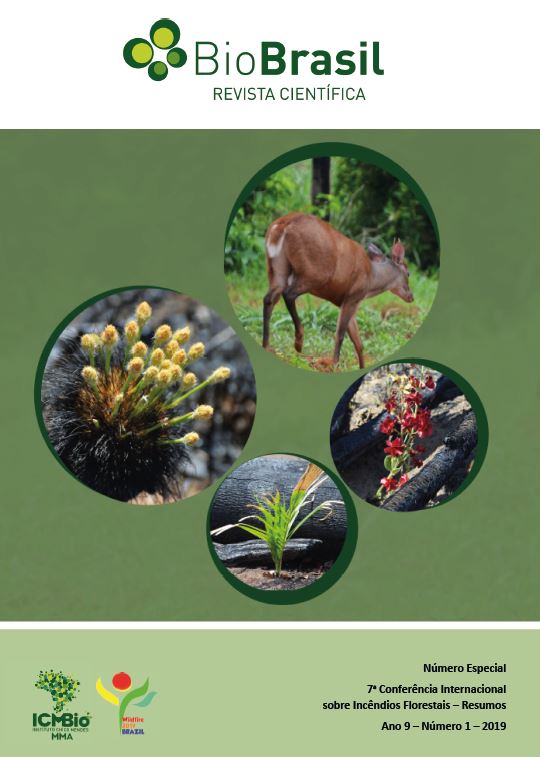Post fire vegetation monitoring system using Google Earth Engine
DOI:
https://doi.org/10.37002/biodiversidadebrasileira.v9i1.1076Palavras-chave:
Land cover monitoring, fire monitoring, cloud computing, remote sensingResumo
Using Google Earth Engine, our team built a Post Wildfire Vegetation Monitoring System. This system provides land managers regular systematic updates for areas burned by wildfire, including changes in vegetation cover, vegetation type, and cover of bare soil, for any time period that data is available (1984-Present). The system integrates operational and legacy Landsat data to produce land cover information at 30-meter spatial resolutions. The system is free and available online providing both and private land managers with near real time information that may be used to better identify, plan, budget for, and execute post wildfire rehabilitation projects including post wildfire harvest, reforestation and revegetation. The system will allow users to perform custom user-defined data summaries and statistics on their specific geographic area of interest by a polygon drawing tool or uploading a KML file. Custom tools are available for users to do analysis of land cover change between time periods and within and/or between one or more explicit areas within a fire to better track recovery of areas based from the full range of pre/post wildfire management actions. This presentation will describe the development of this system and provide examples of its use for recent wildfires in California.
Downloads
Downloads
Publicado
Edição
Seção
Licença
Copyright (c) 2019 Os autores mantêm os direitos autorais de seus artigos sem restrições, concedendo ao editor direitos de ção não exclusivos.

Este trabalho está licenciado sob uma licença Creative Commons Attribution-NonCommercial-NoDerivatives 4.0 International License.
Os artigos estão licenciados sob uma licença Creative Commons Atribuição-NãoComercial-SemDerivações 4.0 Internacional (CC BY-NC-ND 4.0). O acesso é livre e gratuito para download e leitura, ou seja, é permitido copiar e redistribuir o material em qualquer mídia ou formato.











